Pistoian Mountains
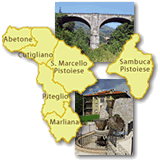
With its vast forests and stone deposits, the mountains for centuries provided the local economy with its means of sustenance. Nonetheless, the steep slopes and rough passes between the Tyrrhenian and the Emilian slopes made communications difficult. It was only in the 18th century, thanks to a bold project by Leonardo Ximenes, was it possible to create a convenient communication route between these impervious territories of northern Italy.
Near San Marcello Pistoiese, 25 km from Pistoia and accessible via on SR66/SS66, a worthwhile stop is the Museo del Ferro, housed in an old ironworks and abounding in tools and functioning models.
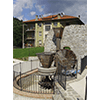
Housed in the ex school of Pontepetri, the museum is the Information Desk of the Iron Itinerary, which also includes the Sabatini Ironworks in Pracchia, and documents the manufacture of iron in the area with the help of exhibits and educational devices. In the first years of the 19th century, of the existing nineteen state-owned ironworks in the Grand Duchy, eight were sited on Pistoia territory: three in Mammiano, two in Sestaione, one in San Felice, one in Piastrelle and one in Malconsiglio. As for the "distendini" (the distendino was a sort of hammer used to beat wrought iron thin; the word indicated the workshop where this operation was performed), of the eleven state-owned "distendini", five were located on Pistoia territory: two in Mammiano, one in San Felice, one in Candeglia, and one in Piastrelle.
The Museum collection comprises equipment for manufacturing iron, functioning models, dioramas such as the reconstruction of the Maresca Ironworks, and archive documents. The tools come from the area ironworks and document the manufacture of iron between the 19th and 20th centuries: the raw material from Elba Island reached the smelting furnaces, and then the ironworks, where the various manufacturing phases were carried out, from forging to the production of utensils and commonly used articles.
In the vicinity of the Museum lies the Learning Garden where a functioning reconstruction of a "gorile" (a system for diverting water), moves the vertical wheel of the ironworks, used to drive the hammer, and the horizontal wheel of the mill. A turbine has also been constructed, and produces clean electric energy necessary to light the area.
(Donato Monaco)
In the 18th century, the scientist Ximenes laid out a road that passed through town, monumental tokens of which are the remains of the Bridge over the Lima, which are visible travelling SR66/SS66 for 12 km.
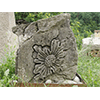
It was designed by Leonard Ximenes who purposed to build the bridge in respect of the peculiarities of an environment having characteristics so predominant as to be "supported" and not "contrasted": ęTo consider those untamed crags – noted Ximenes – as ornamentations of some fineness and comeliness, would be the same as contrasting nature that would have instead always boasted its conquest over all ornamentation; I have therefore instead decided to support it artfully, assembling the entirety with rusticated, disorderly and almost shapeless ashlar.
Inaugurated in 1772, the one-arch bridge was made of ashlar masonry and enriched by elegant twin fountains. This bridge and the one over the Sestaione represented for the time two major feats of architecture and engineering, situated on the Royal Road into Modenese territory.
On September 27, 1944, retreating Nazi troops mined and blew up the monumental bridge. It was later rebuilt but, unlike the bridge on the Sestaione, not following Ximenes’ original plan. In the course of maintenance works on the banks of the stream, several significant fragments were recovered (bosses of worked stone, ashlar fragments, stone decorations and part of the keystone mascaron), which will be recomposed in the form of a monument in the nascent commemorative garden, sited near the old bridge and promoted by the Communes of Piteglio and San Marcello Pistoiese.
(Graziano Magrini)
Continuing along the same road and then taking SS12, we reach Cutigliano, near which rises another important token of the eighteenth-century road: the Bridge over the Sestaione.
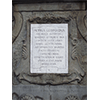
Designed by the Jesuit Leonardo Ximenes, the bridge over the Sestaione stream was completed between 1780 and 1781. The structure had two elliptical arches supported by lateral trusses and a large pillar in the middle, the base of which rested on the stream’s bed. Destroyed during World War II, it was reconstructed in 1948 "where it was, as it was" by architect Alidamo Preti on the basis of Ximenes’ drawings. A plaque on an elegant fountain in the vicinity of the bridge recalls the admiration of Grand Duke Peter Leopold of Lorraine for the boldness of the construction. The bridge’s impressive structure can best be admired by leaving the main road and taking Via delle Acacie. This bridge and the one on the Lima, inaugurated a few years earlier (1772), for the time represented two remarkable feats of architecture and engineering, situated on the Royal Road into Modenese territory.
(Graziano Magrini)
In the locality of Rivoreta, about 8 kilometres from the Bridge, stands the Museo della Gente dell'Appennino Pistoiese, a unique ethnographic collection with a wealth of objects of everyday use, employed by local populations over the past centuries.
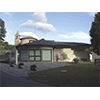
The idea of a museum documenting the material culture of the people who lived in the Pistoia Apennines dates from the 1970s, but it was only in the '90s that it became a concrete reality, thanks to the support of the Ecomuseum. The ethnographic collection includes objects of daily use and tools of work typically employed by the mountain people (charcoal burners, woodsmen). All of the objects date from the 19th and 20th centuries, are original to the territory and have been included in an itinerary made up of imagination, evocation and sounds. Each year, on the last Sunday in July, in celebration of the Live Museum Day, the old trades and traditional activities of the area are represented. The Museum can be appreciated also by the visually impaired, thanks to the Walk-Assistant technology. In addition to the educational offer of the Ecological Museum's Farm-Forest-Pasturage Itinerary, there is a toys workshop
(Graziano Magrini)
For lovers of botany, an absolute must visit is to the local Forestal Botanical Garden, a veritable museum of Apennine flora.
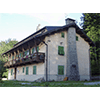
Strongly desired by scholar of alpine flora Federico Strada, planning of the garden got underway as of the 1980s: in 1986 a consortium was founded, made up of various institutions to manage the activities (the Regional Administration of Tuscany, the State Foresters Corps, the Mountain Community of the Pistoian Apennines, and the Universities of Florence, Pisa and Siena), and it was inaugurated in 1987.
The Garden seeks to promote the area’s forestal aspects, of which the nearby Campolino Oriented Nature Reserve is the most significant example. Instituted in 1972, the Reserve preserves the last remains of indigenous woods of red fir (Picea abies), as well as firs, beech and high-trunk trees. The Garden is divided into "theme" areas, including a wetland with a small peat-bog, a calcareous rocaille and a siliceous rocaille with many species of flora typical of Pistoian Apennine altitudes (gentians, saxifrages, primulas, bilberries, lilies, orchids). The term "rocaille" (from the French) indicated several bizarre rustic architectures, decorated with artificial stalactites and shells, common in Italian gardens in the 17th and 18th centuries.
The Botanical Garden is also the point of departure of two itineraries: one of these leads to the reserve of red fir trees (Picea abies) of Campolino, while the other traverses the woods of the upper Val Sestaione, arriving up to Regine. The route is completed by the Fontana Vaccaia Learning Centre, housed since 1997 in the Foresters Corps Station. The availability of specific bibliographic material, equipment for studying plants, and a room for viewing films and slides, make it an ideal centre for research and science dissemination activities. A small natural science museum is presently being set up and will exhibit typical manufactures of the Pistoian mountains, as well as an herbarium containing numerous dried specimens of the local flora.
(Anna Toscano)
The itinerary’s point of arrival, finally, is Abetone, the town that rose near the pass of the Apennine divide, on SS12. The course of Ximenes’ old road is marked by two monumental pyramids which celebrate the creation of the Modenese Royal Road.
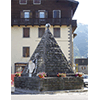
Designed by Leonardo Ximenes and erected on the old boundary between the Grand Duchy of Tuscany and the Duchy of Modena, the pyramids of Abetone are the symbol of one of the most important and efficient works of engineering of the Lorraine period: the construction of the Modenese Royal Road. Promoters of the daring initiative were Grand Duke of Tuscany Peter Leopold and Duke of Modena Francesco III, as the inscriptions on the pyramids recall.
The Modenese Royal Road, known also as the Abetone Pass, connected the Grand Duchy via Pistoia with the Duchy of Modena and thus to the Hapsburg Empire. The new road was made for faster connections with the port of Livorno and had both military and economic value. Begun in 1766 and finished about ten years later, work was directed on Tuscan territory by Leonardo Ximenes, and on the Modenese side by Pietro Giardini. The construction of the route required great planning capabilities, especially in the tract from the Lima to Abetone, where bridges, sharp bends and supporting walls were constructed. The impressive work was crowned by two monumental structures: the bridge over the Lima and the bridge over the Sestaione.
(Graziano Magrini)
****************************
Texts by Elena Fani
English translation by Victor Beard
Last update 14/feb/2008



 = libraries and archives
= libraries and archives  = scientific research centers
= scientific research centers  = memorial places of scientists
= memorial places of scientists = public health places
= public health places = places of science and worship
= places of science and worship = places of technology
= places of technology  = museums and collections
= museums and collections  = villas and gardens of science
= villas and gardens of science


